#first battle of the marne
Explore tagged Tumblr posts
Text

Corpses after the First Battle of the Marne in 1914, Champagne region of France
French vintage postcard
#vintage#tarjeta#france#briefkaart#battle#postcard#photography#1914#region#postal#carte postale#champagne#sepia#the first battle of the marne in#ephemera#historic#french#ansichtskarte#marne#postkarte#postkaart#corpses#photo
5 notes
·
View notes
Text





The Twilight Zone S3E1
TWO
“This is a jungle, a monument built by nature honoring disuse, commemorating a few years of nature being left to its own devices. But it's another kind of jungle, the kind that comes in the aftermath of man's battles against himself. Hardly an important battle, not a Gettysburg or a Marne or an Iwo Jima. More like one insignificant corner patch in the crazy quilt of combat. But it was enough to end the existence of this little city. It's been five years since a human being walked these streets. This is the first day of the sixth year - as man used to measure time. The time: perhaps a hundred years from now - or sooner. Or perhaps it's already happened two-million years ago. The place: The signposts are in English so that we may read them more easily, but the place - is The Twilight Zone.”
#the twilight zone#twilight zone#twilightzoneedit#rod sterling#60s#60s horror#60s tv shows#60s tv#60s tv series#60s tv show#gif#gifs#my gif#my gifs#my gif post#my gif pack#my gif posts#gifset#vintage#vintage tv#vintage tv shows#vintage tv show#science fiction#sci fi#sci fi tv#science fiction tv show#60s sci fi#60s science fiction
49 notes
·
View notes
Text






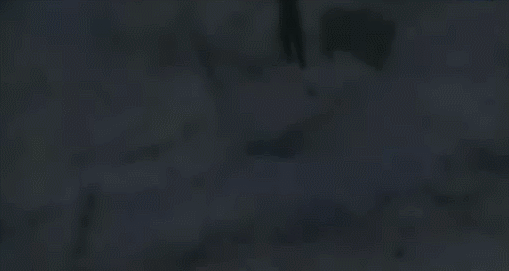



“‘Come out, English soldier; come out here to us.’ For some little time we were cautious, and did not even answer. Officers, fearing treachery, ordered the men to be silent. But up and down our line one heard the men answering that Christmas greeting from the enemy. How could we resist wishing each other Merry Christmas, even though we might be at each other’s throats immediately afterwards? So we kept up a running conversation with the Germans, all the while our hands ready on our rifles. Blood and peace, enmity and fraternity - war’s most amazing paradox. The night wore on to dawn - a night made easier by songs from the German trenches, the pipings of piccolos and from our broad lines laughter and Christmas carols. Not a shot was fired." -Peace on the Western Front: Goodwill in No-man's Land - The Story of the World War I Christmas Truce {Smithsonian Magazine}
Hetalia ~ Episode 100 ~ Japanese Version + Germany & England
Gifs by @aph-japan {Do Not Repost or Reproduce without my Permission} {Do Not Remove Caption} {DO NOT Use my Posts for overly negative commentary} [Positive or Respectful is OK!] (Please ASK to Use)
During the first eight weeks of World War I, French and British troops stopped the German attack through Belgium into France outside Paris at the First Battle of the Marne in early September 1914. The Germans fell back to the Aisne valley, where they dug in. In the First Battle of the Aisne, the Franco–British attacks were repulsed and both sides began digging trenches to economise on manpower and use the surplus to outflank, to the north, their opponents. In the Race to the Sea, the two sides made reciprocal outflanking manoeuvres and after several weeks, during which the British forces were withdrawn from the Aisne and sent north to Flanders, both sides ran out of room. By November, armies had built continuous lines of trenches running from the North Sea to the Swiss frontier.
The Christmas truce (German: Weihnachtsfrieden; French: Trêve de Noël; Dutch: Kerstbestand) was a series of widespread unofficial ceasefires along the Western Front of the First World War around Christmas 1914. The truce occurred five months after hostilities had begun. Lulls occurred in the fighting as armies ran out of men and munitions and commanders reconsidered their strategies following the stalemate of the Race to the Sea and the indecisive result of the First Battle of Ypres. In the week leading up to 25 December, French, German and British soldiers crossed trenches to exchange seasonal greetings and talk. In some areas, men from both sides ventured into no man's land on Christmas Eve and Christmas Day to mingle and exchange food and souvenirs. There were joint burial ceremonies and prisoner swaps, while several meetings ended in carolling. Men played games of football with one another, creating one of the most memorable images of the truce. Hostilities continued in some sectors, while in others the sides settled on little more than arrangements to recover bodies. The following year, a few units arranged ceasefires but the truces were not nearly as widespread as in 1914; this was, in part, due to strongly worded orders from commanders, prohibiting truces. Soldiers were no longer amenable to truce by 1916; the war had become increasingly bitter after the human losses suffered during the battles of 1915.
The truces were not unique to the Christmas period and reflected a mood of "live and let live", where infantry close together would stop fighting and fraternise, engaging in conversation. In some sectors, there were occasional ceasefires to allow soldiers to go between the lines and recover wounded or dead comrades; in others, there was a tacit agreement not to shoot while men rested, exercised or worked in view of the enemy. The Christmas truces were particularly significant due to the number of men involved and the level of their participation—even in quiet sectors, dozens of men openly congregating in daylight was remarkable—and are often seen as a symbolic moment of peace and humanity amidst one of the most violent conflicts in human history.
-from Wikipedia's article; "Christmas truce"
"Having a gunfight on {a Holy night/timeframe} wouldn't be right." -Germany
Say what you will about "Hetalia", but this sequence was semi-based on real historical events - Real events that should be much more well known.
#historical hetalia#hetalia#aph england#aph germany#arthur kirkland#ludwig beilschmidt#gereng#hws germany#hws england#geruk#hetalia: the world series#hetalia world series#hetalia world series: season 2#hetalia: season 4#the christmas truce#hetalia: jpn version#chai hetalia#chai gifs#chai hetalia gifs#chai germany#chai england#hetalia: original version#(I was Thinking About This Sequence Again {and I Am Hoping Beyond Hope Right Now for Things} as I post this but Yes)#(Its one of the ones I actually really didnt mind at all Considering the Content it Actually Got Half Right)#(This is stuff like what this series Concept Could have Done More when Handled Right)#(There is another popular post around with the scene but it's US dub version and I dont really want to further promote for Reasons)#(So Im choosing to specifically take from the original version to show what the original text also was)#(The link to the original quotes article since died but I can provide it in comments later and extra context is from Wiki which has a whole#(Page on It and its History YOU SHOULD Know REGARDLESS of the Context you Learn it from)#(I havent made edits for the fan base in ages PLEASE Dont Make Me Regret The Decision and I will be carefully watching comments on post)
77 notes
·
View notes
Text
WIND.S (French Folks Traditions)
By observing the wind at certain times, we can know which one will dominate during the year. In this area, the Palm Sunday wind is the most widespread indicator, but it is not the only one.
In Côte d'Or, it is the one that blows during the Elevation of the mass of the first Sunday of Lent, unless it is "corrected" by that of Palm Sunday.
Often, the personified winds also engage in battle.
In the Marne, according to tradition the winds begin to fight on the day of the Conversion of Saint Paul (January 25) and cease their fight on Saint Blaise (February 3). The wind that wins the victory will be the one that blows that day: it will dominate throughout the year.
In the Vosges, it is said that the four winds fight at the Conversion of Saint Paul and that the first to blow at sunrise will be the dominant wind of the year to come.
Each region being exposed to different winds, beliefs often crystallize on those that farmers observe at home. For example, in Puy-de-Dôme, the east wind is only supposed to blow very rarely and not for more than three hours at a time.
A woman from the Gospel of the Cattails (15th century) declares that in Savoy, to ward off a storm, you must make a fire with four oak sticks crossed in the wind and draw a cross on them. (a lot of crosses, definitely.)
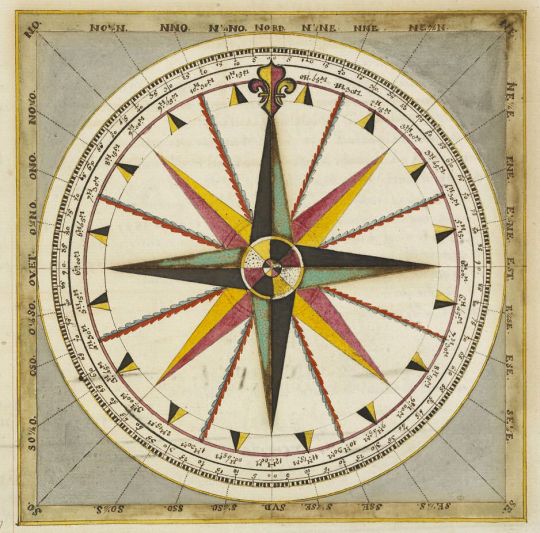
Marine winds :
In Finistère it is usual to clean a chapel which will be chosen and to pour the collected dust in the direction of the wind that we want to see blow.
In the 16th century, the sorcerers' wind ropes were mentioned, which had three enchanted knots. The first to be unknot gets a gentle wind. The second a strong wind and the third, a storm.
Often, Saint Anthony is invoked with insults when the sea is calm, or the moss of the boats must whip each other to bring in the winds.
-
Omens :
Still in the Gospel of the Cattail it is also said that when "you hear a strong wind, know that it is a sign of betrayal, or bad news."
In certain regions (Brittany) high winds are signs of misfortune, but in others (Berry) of prolific harvests. "Year of high wind - Year of wheat".
In many places in central France, there is fear of the wind on August 9, which can destroy crops overnight.
In the Vosges, we fear the wind at night from January 11 to 12. If it comes from the East, the animals will die. If he comes from the South, the house will be full of sick people. If he comes from the West, there will be war, and if he comes from the North, the fields will be barren.

Gusts of Wind and Whirlwind :
In many places in France, Whirlwinds are a "bad" omen : either the Devil pursues a soul; either certain People of the Little People pursue several; either it is the souls of the damned who wander and seek to harm men; (etc)
Sometimes, even Sorcerers can find themselves caught in it against their will for not having obeyed the Demon's orders.
In most cases, to free those who are under the influence of such winds, it is necessary to plant a knife with a curved blade in the center of the whirlwind. Sometimes it is a fork; in all cases it must be a metal and sharp object. Often it is necessary to pronounce consecrated formulas and command the “Follet” to go away.
-
[Excerpts arranged by me from Sebillot & M.C Delmas.]
[pics @Pinterest]
33 notes
·
View notes
Text

Georges Ferdinand Bigot - Jeux de Kronprinz: Le butin {Games of the Crown Prince: The Loot} (1915) This satirical drawing by French cartoonist Georges Ferdinand Bigot depicts German Crown Prince Wilhelm dressed in a corset with two clocks as breasts, gazing at a mirror. The cartoon mocks his vanity, flamboyant and womanizing behavior, and highly ineffective military leadership during World War I. It specifically alludes to the First Battle of the Marne, where his only "loot" was the lost time for the German army, leading to a prolonged stalemate and effectively ending the initial German offensive.
11 notes
·
View notes
Text
Causes of World War I in Europe The Causes of Conflict
Causes World War I, In Europe often referred to as the Great War, was a cataclysmic battle that reshaped the globe from 1914 to 1918. Its reasons were complex and multifaceted, stemming from a tangled net of nationalism, imperialism, militarism, and a series of alliances amongst European powers. The war resulted in unheard of stages of destruction and loss of lifestyles, essentially altering the political landscape and placing the degree for future conflicts.

Causes of the War
The roots of World War I may be traced again to the overdue nineteenth and early twentieth centuries, a time while European countries were fiercely competing for colonies and affect. The upward push of nationalism fueled dreams for independence among ethnic agencies, specifically in the Balkans, where Slavic nationalism turned into a mighty pressure. This region, frequently referred to as the "powder keg of Europe," became a flashpoint for tensions between the Austro-Hungarian Empire and Serbia, which sought to unite Slavic peoples.
Militarism also played a tremendous role inside the lead-up to the war. European international locations constructed up their army forces and advanced large plans for mobilization. The fingers race, mainly between Germany and Great Britain, created a climate of fear and suspicion. The Schlieffen Plan, Germany's strategy for a two-the front battle towards France and Russia, exemplified the militaristic mindset and the notion that quick, decisive movement ought to save you prolonged battle.
The tangled alliances of the time—which includes the Triple Entente among France, Russia, and Britain and the Triple Alliance of Germany, Austria-Hungary, and Italy—supposed that any localized conflict should hastily expand right into a broader struggle. This turned into illustrated whilst Archduke Franz Ferdinand of Austria-Hungary become assassinated by a Bosnian Serb nationalist in June 1914, setting off a sequence response of mobilizations and declarations of warfare.
The War Begins
On July 28, 1914, Austria-Hungary declared struggle on Serbia, invoking the alliance systems that speedy pulled in other international locations. Russia mobilized in protection of Serbia, leading Germany to declare warfare on Russia. This turned into followed via declarations towards France and Belgium, drawing the British into the battle. By August 1914, lots of Europe changed into embroiled in struggle.
The initial section of the battle changed into characterized by way of movement and optimism. The German forces performed the Schlieffen Plan, advancing thru Belgium into France. However, the predicted brief victory changed into a stalemate as each sides dug in for trench warfare. The First Battle of the Marne in September 1914 halted the German strengthen and marked the beginning of a brutal and protracted conflict.
Life inside the Trenches
The trench struggle that ruled World War I became a terrible revel in for soldiers. Trenches stretched for miles, with opposing forces often just yards aside. Conditions had been appalling; soldiers faced dust, vermin, and a lack of sanitation. The mental toll was huge, with many guys laid low with what turned into then called "shell shock," now diagnosed as PTSD.
Combatants fought through a chain of bloody battles, which include Verdun and the Somme, where casualties had been spectacular. The Battle of the Somme, initiated in July 1916, aimed to alleviate strain at the French at Verdun and worried the primary use of tanks at the battlefield. Despite the creation of recent generation, the conflict remained mired in attrition, with neither side capable of stable a decisive victory.
Technological Innovations
It is noticed enormous technological advancements that modified the character of struggle. The use of machine guns, artillery, and poison gas delivered to the lethality of the battlefield. The creation of aircraft for reconnaissance and later bombing missions additionally marked a new generation in military strategy. Submarines and naval war, specially the German U-boat campaign, further complex the warfare, as blockades and unrestricted submarine struggle affected deliver lines and civilian delivery.
The war additionally fostered improvements in remedy and remedy for wounded infantrymen. The development of blood transfusions, advancements in surgical techniques, and the established order of prepared ambulance offerings stored endless lives, albeit at a super human fee.
The Home Front
The effect of the warfare prolonged far beyond the battlefield. Governments mobilized whole populations, instituting rationing and inspiring girls to join the body of workers as guys went off to fight. Women took on roles historically held by way of men, running in munitions factories, serving as nurses, and contributing to the conflict effort in numerous capacities. This shift commenced to task conventional gender roles and could have lasting implications for society.
Propaganda have become a effective device for governments, shaping public perception of the war and retaining morale. Nations painted the war as a war among proper and evil, using emotional appeals to rally support. Censorship also performed a critical function, with governments controlling the glide of statistics to prevent dissent and preserve solidarity.
The War Ends
The conflict dragged on for 4 long years, leading to immense suffering and disillusionment. By 1917, with growing casualties and monetary stress, public sentiment commenced to shift. The Russian Revolution that year noticed the Bolsheviks take power, leading to Russia's withdrawal from the conflict and a peace treaty with Germany in 1918.
The entry of the US into the battle in April 1917 provided a tremendous boost to the Allied powers. American troops, clean and enthusiastic, helped flip the tide towards the exhausted Central Powers. By late 1918, the war-weary countries sought an end to hostilities. On November 11, 1918, an armistice changed into signed, bringing the combating to a halt.
Aftermath and Legacy
Life in the trenches during World War I the Treaty of Versailles in 1919 formally ended the struggle and imposed heavy reparations on Germany, leading to economic worry and political instability. The redrawing of borders in Europe and the crumble of empires—the Austro-Hungarian, Ottoman, German, and Russian—created new international locations and sowed the seeds for future conflicts.

It is left an indelible mark on the 20th century, influencing artwork, literature, and political concept. The battle’s legacy is a haunting reminder of the cost of battle and the fragility of peace. As historians continue to investigate its reasons and results, World War I stays a pivotal second in human records, shaping the direction of the cutting-edge international.
3 notes
·
View notes
Note
those "Diverse" films are that way b/c California has made retarded laws that the cast has to be multi-ethnic if you don't want your film/studio sued for "muh discrimination"
I'd understand a law forcing studios to hire anyone available for like the background crews, but forcing the cast to be so is straight up stupid when dealing with period pieces b/c then idiots will think that WAS what happened and make fools of themselves.
That one got tossed I think, I know the one about companies with over X number employees need to have Y number?% executives that are women or minority group got tossed.
Whatever group it is that runs the oscar's on the other hand set up their new rules for best picture and it has diversity quotas to the point where if you wanted to do a movie about the WW1 Battle of the Marne or first battle of Ypres there's basically zero way to land best picture, LOTR would be hard pressed to manage best picture at least if I'm remembering the rules right, might be able to have enough people not on camera that will fill the diversity quota that you're ok but I don't think so.
Battle of Hastings 1066, William the Conqueror secures the Norman conquest of Great Briton making him king of England, but why are there so many white people in this movie tho......
Might be able to manage doing another cromwell movie and hit the quota, but ya.
8 notes
·
View notes
Text
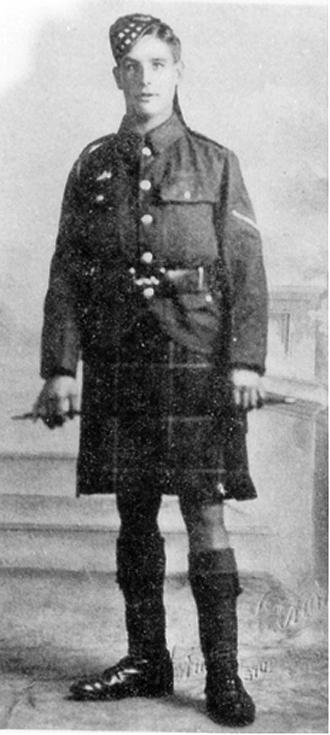
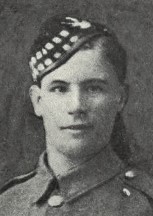
On 20th July 1918 near Marfaux, France, Sergeant John Meikle died, he was just 19.
Sergeant Meikle joined the 2/4th Seaforths on the 8th February, 1915, when barely 19 years. He was trained at Bedford, Fort George, and Blair Atholl, being one of the hardy band to cross the Grampians on the long trek between the Fort and the Blair. He went to France on July 30th, 1916, and although wounded on two or three occasions, never seriously, had only been home on furlough, his last leave being in November, 1917, shortly after the battle of Cambrai. He had a high reputation in the battalion throughout, and it was felt that when he got the Military Medal for gallantry in action on September 20, 1917, he had won it well. Sergt Mekle received a gold watch from the people of Nitshill when home on furlough, and was promoted sergeant on returning to France
On 20th July 1918 near Marfaux, France, Sergeant John Meikle died, he was just 19.
John Meikle was one of the many First World War recruits that were so anxious to join up that they lied about their age.
He was just 16 years when he volunteered to go to war by pretending to be 18, the lowest official age for enlistment. One historian has estimated that as many as 250,000 "boy soldiers" under the age of 18 signed up to fight in the Great War.
Three years after he enlisted, Meikle died aged 19 and is thought to be one of the youngest-ever recipients of the Victoria Cross. He is also the only Scottish railway employee to have received this award for valour. Of the 628 crosses awarded during the war, only 25 went to men under 20.
Like so many young men at the start of the war, Meikle was motivated by patriotism to "do his bit" for his country. He attempted to enlist after war broke out in 1914 but was rejected due to his youthful appearance and small stature.
Eventually he was accepted by the Seaforth Highlanders on 8 th February 1915 at Maryhill Barracks. He lied about his age saying he was 18, when in fact he was 16 years and five months old. But even at his pretend age of 18, he had to wait a further year to go to France, as a soldier had to be 19 to fight overseas.
Meikle's personal military service record, along with many others, was destroyed in an air raid during the Second World War. But it is know that on July 30th, 1916, Meikle, who had by now trained as a Lewis (machine-) gunner, was sent to France. He was transferred to the 1/4th Seaforth (Ross Highland) Battalion, fighting in the Battle of the Somme and subsequently rising quickly through the ranks.
He was injured in the 3rd Battle of Ypres in 1917, during which he was awarded the Military Medal for his actions near Langmarch. He was sent home to Glasgow to recover from his injuries.
While in Nitshill in November 1917, he was presented with a gold watch on behalf of his fellow villagers in the local public hall. The watch engraved with his initials remains a treasured family heirloom. When Meikle returned to France, he had been promoted to sergeant.
The Second Battle of the Marne was the turning point for the Allies in the War, and became known as the last great German offensive. By 20 July 1918, Meikle and his unit (No 2 Company, 4th Battalion), were with the 51st Highland Division in the French Aisne-Marne Sector, and would defend the Ardre Valley.
Meikle's comrade, Company Sergeant Major G W Sturrah, (who was only 23 years old himself), in a letter to Meikle's mother Annie, wrote: "It is with the deepest regret that I write to you to inform you of your dear son 200854 Sgt Meikle, J, of his death, (killed in action) on the 20th July. We were on this day attacking a strong enemy position, and your dear lad behaved as gallantly as ever Britisher did. He single handed knocked out an enemy machine gun post and its crew. Knocking out with a walking stick he always used to carry and was afterwards rushing another similar post when he was killed by Machine Gun fire. His death was instantaneous."
After his death, his mother Annie donated accumulated funds from her son's VC pension and soldiers pay to two local churches. The family did not attend the official presentation of John's VC at Buckingham Palace, as they were unable to afford the associated expense of new clothes and accommodation in London. Instead they chose to receive the decoration during a local parade at Maryhill Barracks on 28 October 1918.
10 notes
·
View notes
Text
Events 7.15 (after 1900)
1910 – In his book Clinical Psychiatry, Emil Kraepelin gives a name to Alzheimer's disease, naming it after his colleague Alois Alzheimer. 1916 – In Seattle, Washington, William Boeing and George Conrad Westervelt incorporate Pacific Aero Products (later renamed Boeing). 1918 – World War I: The Second Battle of the Marne begins near the River Marne with a German attack. 1920 – Aftermath of World War I: The Parliament of Poland establishes Silesian Voivodeship before the Polish-German plebiscite. 1922 – The Japanese Communist Party is established in Japan. 1927 – Massacre of July 15, 1927: Eighty-nine protesters are killed by Austrian police in Vienna. 1941 – The Holocaust: Nazi Germany begins the deportation of 100,000 Jews from the occupied Netherlands to extermination camps. 1946 – The State of North Borneo, now Sabah, Malaysia, is annexed by the United Kingdom. 1954 – The Boeing 367-80, the prototype for both the Boeing 707 and C-135 series, takes its first flight. 1955 – Eighteen Nobel laureates sign the Mainau Declaration against nuclear weapons, later co-signed by thirty-four others. 1966 – Vietnam War: The United States and South Vietnam begin Operation Hastings to push the North Vietnamese out of the Vietnamese Demilitarized Zone. 1971 – The United Red Army is founded in Japan. 1974 – In Nicosia, Cyprus, Greek junta-sponsored nationalists launch a coup d'état, deposing President Makarios and installing Nikos Sampson as Cypriot president. 1975 – Space Race: Apollo–Soyuz Test Project features the dual launch of an Apollo spacecraft and a Soyuz spacecraft on the first Soviet-United States human-crewed flight. It was the last launch of both an Apollo spacecraft, and the Saturn family of rockets. 1979 – U.S. President Jimmy Carter gives his "malaise speech". 1983 – An attack at Orly Airport in Paris is launched by Armenian militant organisation ASALA, leaving eight people dead and 55 injured. 1983 – Nintendo released the Famicom in Japan. 1996 – A Belgian Air Force C-130 Hercules carrying the Royal Netherlands Army marching band crashes on landing at Eindhoven Airport. 1998 – Sri Lankan Civil War: Sri Lankan Tamil MP S. Shanmuganathan is killed by a claymore mine. 2002 – "American Taliban" John Walker Lindh pleads guilty to supplying aid to the enemy and possession of explosives during the commission of a felony. 2002 – The Anti-Terrorism Court of Pakistan sentences British born Ahmed Omar Saeed Sheikh to death, and three others suspected of murdering The Wall Street Journal reporter Daniel Pearl to life. 2003 – AOL Time Warner disbands Netscape. The Mozilla Foundation is established on the same day. 2006 – Twitter, later one of the largest social media platforms in the world, is launched. 2009 – Caspian Airlines Flight 7908 crashes near Jannatabad, Qazvin, Iran, killing 168. 2009 – Space Shuttle program: Endeavour is launched on STS-127 to complete assembly of the International Space Station's Kibō module. 2012 – South Korean rapper Psy releases his hit single Gangnam Style. 2014 – A train derails on the Moscow Metro, killing at least 24 and injuring more than 160 others. 2016 – Factions of the Turkish Armed Forces attempt a coup. 2018 – France win their second World Cup title, defeating Croatia 4–2.
1 note
·
View note
Text
Rudolf Berthold (Part 1)
Disclaimer: This will have 3 parts as it will be longer than I thought it would be. The first part is about Bertholds early life and military career up to the end of 1915 when Bertholds fighter pilot career starts, the second part will be 1916 to 1918 where major events will be outlined as well as a documentation of his many injuries. The third part will concentrate on his activities after the war and his controversial death.
I will write down the books from which I took the information for this post at the end of Part 3.
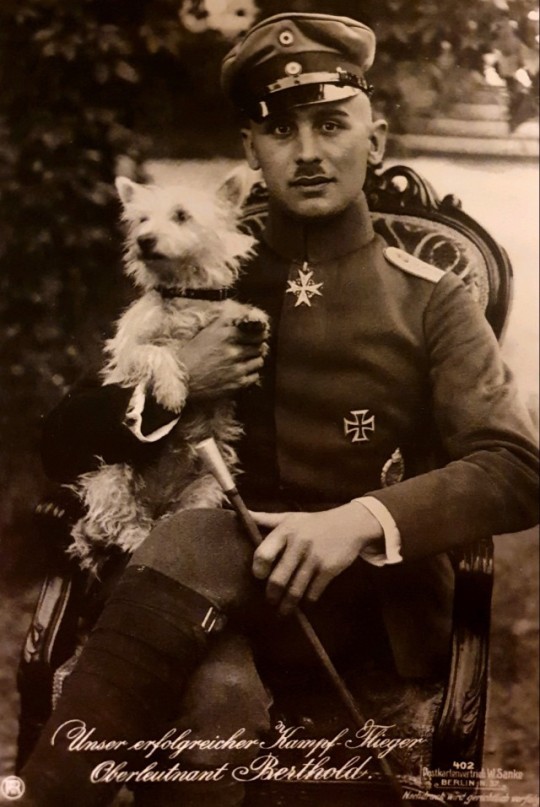
Rudolf Berthold was born on 24th March 1891 in Ditterswind, Franconia (Bavaria), German Empire. His full name was Oskar Gustav Rudolf Berthold but as was common at the time he was called by his third name Rudolf. His parents were from Saxony but at the time of Rudolfs birth his father was the Oberförster (Chief Forester) of the area around Ditterswind. He had seven siblings; closest to him was his sister Franziska; she worked as a nurse and took care of him during his many wounds (more to that in Part 2). He always had a very strong sense of duty towards his country and was a fervent patriot, so to no surprise, after graduating school at 19 he enrolled in the military. He joined the Saxon Infantry Regiment Graf Tauentzien von Wittenberg (3. Brandenburgisches) Nr. 20. In his spare time he was very involved in several youth movements, teaching young boys survival skills and instilling in them the same love he had for Germany.
In the summer of 1914 Berthold volunteered for flight training at Halberstadt. Here he trained to be an observer with other ambitious comrades, among them Oswald Boelcke. After the assassination of Archduke Ferdinand, tensions between the European powers reached a boiling point and he was recalled to his infantry regiment. He was able to formally transfer to the Fliegertruppen in July 1914 with the goal to become a pilot. The declaration of war put a stop to his plans as he was called to report as an observer to the Royal Saxon Air Base at Grossenhain.
Rudolf Bertholds war career began with Feldflieger-Abteilung 23 (FFA 23), which was part of General von Bülows 2nd Army. He flew reconnaissance on the Western front. Already in mid-August he almost became a prisoner of war when he and his pilot Leutnant Viehweger had to make an emergency landing 15 km from the front in enemy territory. Berthold and Viehweger hid in the woods and managed to make contact with a German patrol the next day. They were able to bring the airplane back to the German lines.
One of his notable early feats was that he discovered a gap between the 1st and 2nd Army during the Battle of the Marne which the French used to thrust into the gap to get behind the German lines. Bertholds discovery led to a change of plans and earned Berthold the Iron Cross 2nd Class. This was followed shortly by the Iron Cross 1st class with Berthold being the second soldier of the 2nd Army to receive it only after Bülow.
After the deaths of some pilots of FFA 23 Berthold was sent to Etappen-Flugzeug-Park 2 to be trained as a pilot. Here he met Hans-Joachim Buddecke who will become his closest friend.

In January 1915 Berthold fulfilled his dream by passing all necessary tests. In his diary he noted that being the one who flies the plane is so important to him because he doesn´t want to have to rely on someone else. He was already infame as a demanding observer who didn´t tolerate a pilot who turns around on a mission because of some bad weather. Now he was the one in full control. At this point of the war the majority of German planes where not yet equipped with weapons. According to Berthold himself the observers were only armed with pistols and rifles. That changed in mid-1915 when machine guns where finally installed.
After being attacked by French planes Berthold and his crew crashed badly with one of the observers dying. This was a turning point for Berthold; from then on, he wanted to fly only on his own so that his decisions (and his mistakes) while flying and fighting would only affect himself.
Immelmann and Boelcke started to become successful with their single seater Fokker Eindecker and Bertholds friend Buddecke was also able to bring down enemy aircraft with this plane. This motivated Berthold to get one for himself. Fighter Units were being established in late 1915 and he was assigned as the officer in charge of KEK Vaux. The Fokker Eindecker which proofed to be superior to enemy airplanes became the weapon of choice for the Fighter Units.
End of Part 1.
#Rudolf Berthold#I hope the two people reading this will appreciate it#Part 2 is coming this evening
17 notes
·
View notes
Text
3 July 2023
Oh It’s A Lovely War
Amiens 3 July 2023
By the end of 1917, time was running out for Germany. Russia may have sued for peace, but the United States had entered the war, and Generals Hindenburg and Ludendorff, now effectively dictators of Germany, knew that numbers would soon inexorably favour the Allies on the Western Front. Ludendorff needed one last masterstroke - a decisive battle to destroy the French and British before the Americans could arrive.
The great offensive - Operation Michael - was aimed at Gough’s Fifth Army, still exhausted from the hell of Passchendaele. On the 21st of March 1918, after a sudden and violent artillery and gas attack, German stormtroopers smashed into the Fifth Army, and although their losses were massive, they attacked with such force that Fifth Army gave way. For a moment, as Haig scrambled to plug the gaps in his line and Fifth Army’s command and control disintergrated, it looked Germany might actually win the war.
It is here, in the popular narrative, that Australia stops them at Villers-Bretonnaux. In reality, there were two battles here that sometimes get conflated into one. At First Villers-Bretonnaux, British and Australian troops managed to halt the German offensive just short of the town. This wasn’t the only place where the BEF had managed to blunt Micheal - Arras held, and while the Germans had taken Albert, they had advanced little further. It was however the final nail in the coffin for any German effort to take the vital railway hub at Amiens. The Germans made a second attempt on the 24th of April and briefly captured the town, but were repulsed by a counterattack the following day. The popular idea here is Chunuk Bair in reverse - the British ‘lost’ the town and the Australians ‘retook’ it. In fact it wasn’t so simple - two Australian and one British brigade took part in the counterattack, alongside French Moroccan troops to the south.
It was a significant victory, but it didn’t stop the Germans completely. Ludendorff launched more offensives throughout the spring (including towards Hazebrouck, which was defended by First Australian Division and several British divisions.) Against all of them, the Allies held, although the fighting was hard and the cost was appalling. The cracks in the German strategy began to show - more and more American troops were being moved in front of them, and more and more of their best men were being killed. The end of the Spring Offensives came at the Second Battle of the Marne, in which chiefly French but also British, Italian and (for the first time in significant numbers) American troops decisively stopped Ludendorff’s last throw of the dice. No one country can claim credit for this - stopping the Spring Offensives required the full effort of every major participant in the Allied order of battle. It was a team effort.
Some people don’t seem to understand that, and sadly they’re often the people in charge of commemorating the war. Which brings us back to Villers-Bretonnuex.

Our first stop today was Adelaide Cemetery, just outside the town. If the name seems familiar, it’s because I’ve mentioned it before, although it seems like years ago now; this was where the Unknown Soldier was exhumed. Today, his former spot is marked with a special inscription, but otherwise the plot has the same shape of tombstone as everybody else. One might lament that he’s been removed from a peaceful plot in France to the hustle and bustle of Canberra - if, of course, they didn’t know that Adelaide Cemetery is sandwiched between a major road and a railway line, so he probably would find the AWM more peaceful.
We went from there to the Australian Memorial outside Villers-Bretonneux. John Monash Centre aside - and I swear, we’ll get to that soon - this is beautiful site, nestled amongst rolling hills and endless fields of wheat. To get to the main monument, you pass between two cemetery plots, as if the graves are lined up on parade - these are largely Australians, but there’s also a lot of Canadian and British soldiers who lost their lives in the battles around Amiens in mid-1918. You pass through two flag poles - French and Australian - and reach the main facade, in which the names of Australia’s missing in this sector of the front are carved. In the middle is a tower - it still bears the scars of the war that followed the war to end all wars.

Visitors can climb the tower, where they can get a commanding view of the countryside. You can see the town itself, and the distant shapes of other strategic features - for example Le Hamel, which we’ll talk about at the end of this log entry. Even if you’re not interested in military minutia, the view is amazing.
It was as we left the tower that one of the most curious and strangely moving episodes of this tour occurred. As I walked down the front steps, I saw a man with a bugle in British service dress - the uniform of the British Tommy - and an officer trudging up to our position. Somehow, in the middle of France, I had encountered some reenactors. It turned out there were seven of them - three men in Welsh Guards uniforms, a Highlander, a nurse, and two members of the Royal British Legion. They’d been deputised by an Australian family to pay tribute to one of their members lost in France during the war.
Suddenly, we were conscripted into this odd little ceremony. We gathered around - the bugler sounded the Last Post, there was a minute’s silence, and then two of us left a wreath in the tower as the Highlander played his bagpipes. It ought to have been very silly, this memorial service with these men in old uniforms, recorded on an iPhone for a faraway family. And yet I teared up. I don’t know why this got me, but I think part of it is the spontaneous nature of the event. These guys were from Wales and England. They had no obligation to pay one of our men this heed - and yet they did, and they went to such effort to do it. We even sang the national anthem together - I can’t remember the last time I actually sang it.
We interrogate forms of remembrance a lot on this course - it’s kind of the point - and we did have a little discussion of this a bit later. Sometimes I feel we as historians can be a little too cynical about this sort of thing. I don’t know if crossgeneration or surrogate grief is something that can be quanitified, but it was real for them, and I think that’s what really mattered.

And then we went into the Sir John Monash Centre. And oooooooh boy.
Remember how I said the museum at Peronne didn’t meet my expectations? Well, this exceeded my expectations, and it did so triumphantly. I expected that this would be bad, but what I got was a nearly heroic example of utter shitness. It crosses the line into utter inappropriateness, speeds right across the world like the Flash, and crosses the line a second time. I’m almost impressed.
First of all, everything - everything - is digitally integrated. You actually have to install an app onto your phone andhave headphones plugged in (or rent them for three euros) to understand anything that goes on here. You then walk up to screens - it’s almost entirely screens, like a sale at Harvey Norman - and press the number of the screen - except if its already playing, the recording just picks up where it already was, which is often halfway through the video. If the screen is out of order, well, no content for you. The inevitable question, of course, is how would you interact with this if you were blind, or deaf? I guess being deaf is just un-Australian.
And the content? I will be fair here and say nothing is technically incorrect, or at least nothing I was actually able to view and hear. My problem is more about what the museum doesn’t say. Monash’s somewhat indifferent career commanding 4th Brigade is neatly glossed over. So too is the Hindenburg Line battle of 29 September, and don’t worry, we’ll get to that. Every other combatant in the war is a footnote, which gives the impression that Monash and the Australians are personally winning every major battle of 1918. Then there’s the language - Australian units withdraw, while British units are shattered. All this is underlined with dodgy, overacted dramatisations and a tactical war that uses 3D models to showcase the battles of Fromelles, Polygon Wood, Amiens and St. Quentin - all rather badly posed, and all looking like they came out of a pre-alpha version of Battlefield 1.
Then there’s the experience. The experience is what this whole thing is built around - the brilliant idea to have a light and sound show right beneath the graves of the dead, giving the visitor a feel - as if that’s possible - of what the Villers-Bretonneux and Hamel battles were like. I actually managed to get a session where I was the only oneside when it started (the door shuts while it’s playing.) I am truly thankful I was. When the government commissioned historians to plan this, they outright said that they wanted visitors to feel ‘pride with a touch of sadness.’ It would probably be difficult for audiences to feel such emotions if they were sharing a room with a university student pissing himself laughing.
Yes, this is conceptually appalling to me - but it’s also so silly that I couldn’t help but laugh, and laugh hysterically at some points. After opening with British troops fleeing Operation Micheal, literally screaming and crying - I’m surprised the director showed enough restraint to stop himself from staining all their trousers with wet patches - a sinister German voice who’s probably meant to be Hindenburg but sounds more like Major Toht from Indiana Jones declares his intention to destroy the British. The viewer is ‘gassed,’ which feels more like sitting in a smoking room at Hong Kong Airport. Then come the brave, steely-faced Australians, counter-attacking alone into Villers-Bretonneux. They get into the Beastly Hun with their bayonets. Some die and it is Sad. One kicks in a door and hip-fires his Lewis Gun into three Germans Rambo-style whilst going “AAAAAAAAAAA” - and then I don’t know what happened for the next ten seconds because that scene was so ridiculous I started cry-laughing.
Then we move onto Hamel, and here comes the great hero, Monash. He points at maps. He walks next to tanks. He stares heroically into the distance. There are no other generals, or even other officers - there is only Monash. (I could almost feel the ghost of Pompey Elliot swearing up a storm next to me.) Monash unleashes his vague powers of tactics upon the Beastly Hun, and the Australians go in. The Germans all have gas masks and therefore have no faces, making it okay to kill them. The sound of artillery forms the drum beat of a Hans Zimmer style musical track as the battle goes on. There’s tanks. There’s explosions. There’s strobe lights. There’s another bloke hipfiring a Lewis Gun and going “AAAAAAAAA.” There are no Americans. Americans don’t exist. And then, because the director suddenly realised that this is meant to be a site of commemorative diplomacy, a brave Australian soldier waves a French flag. Monash has won the war.
If I tried to come up with a satirical depiction of Australian history, I honestly couldn’t beat this. It is sublime in its idiocy. I want this on DVD. I want to show all my family and friends. This might be the best First World War comedy since Blackadder.
Don’t get me wrong, I think this is very offensive and it shouldn’t be anywhere near a cemetery, let alone under it. But at some point, you just have to laugh.
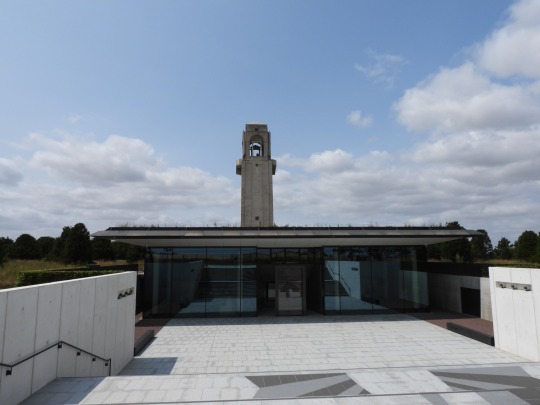
Now there’s one big problem with the Centre, apart from everything else, and that’s the name. John Monash fought a lot of key battles in the Australian Corps’ history. Villers-Bretonneux was not one of them. I do wonder if there was another option here, to focus not on Monash but on Harold ‘Pompey’ Elliot, a superb brigadier who was haunted by his experiences of the war, and whose life was tragically cut short by the consequences of PTSD. At very least, he was actually there and played an important part in the battle.
The Sir John Monash Centre is not the best museum in France - in fact, it’s not even the best Australian war museum in Villers-Bretonneux. That laurel belongs to the French-Australian Museum in the town itself, which we visited afterwards. This is in the top story of the local school, which was rebuilt after the war with subscription money raised by Victorian schoolchildren. To this day, there’s a sign above their courtyard - ‘DO NOT FORGET AUSTRALIA.’ The museum is very small and very intimate, although perhaps a little scattered - it’s clearly a labour of love, a collection of a few treasured relics, models and artworks that connect this small French town with a country on the far side of the world. The assembly hall, which the staff kindly let us go into, is decorated by wooden carvings of Australian animals made by a disabled Australian veteran after the war. This probably cost a fraction of the Sir John Monash Centre, and is probably maintained by two staffmembers and a goat, but it is worth infinitely more than that supposedly ‘world-class’ installation.

Sadly, this museum doesn’t get many visitors anymore - all the tour groups want to go to the glitzy new thing down the road. So here’s my advice - go to the Australian Memorial by all means, but skip the Centre, unless you want a quick laugh. Come here instead. You won’t regret it.
The main teaching for today ended at Heath Cemetery, where we discussed some Aboriginal soldiers’ graves that we’d actually found out about at the aforementioned museum. It’s hard to find Indigenous soldiers - as Aboriginal people were banned from the armed forces, those that passed as white were hardly going to write what they were on their enlistment forms. It’s led to a significant part of the AIF’s history being obscured - but today, it’s being reclaimed as families find their veteran ancestors, dead or alive. In fact, one of the few things I liked about the Centre was an art installation of two emus made from (imitation) barbed wire - a symbol of these men who died so far from Country under an unfamiliar sky, with no Southern Cross to guide them home.

We headed back to Amiens, and most of the group alighted here, but a few of us - the cool members of the group - went back out to the memorial at Le Hamel. This is a curious memorial, but I don’t hate it - it’s basically a big slab in the middle of a wheatfield with the Australian, American, British, French and Canadian flags flying above it. (This is where the Red Baron was shot down, and as the Canadians still think they got him, they get to have a flag.) Plaques on the path to the memorial describe the course of the battle fairly well (although I feel they do a bit of an injustice to the Tank Corps, which are never mentioned by name.) Once there, you have a pretty good picture of the fields leading to Le Hamel, the town that Monash famously captured in ninety-three minutes on the 4th of July 1918.
Hamel was a great achievement, but it needs to be put into context - this was a local action in preparation for the real offensive at Amiens in August. Here Monash also performed very well, but so too did Currie and the Canadian Corps, and Sir Henry Rawlinson in overall command. (The British III Corps advance was less impressive, but still outstanding by Western Front standards.) Between Hamel, Amiens and Mont St. Quentin, Monash more than earned his reputation as an outstanding commander. But he wasn’t infallible, and now I can finally talk about 29th September 1918 and the St. Quentin Canal.

Monash and the Australian Corps were meant to be the main force here. IX Corps (remember them from Suvla?) were to swing south in a secondary role, while III Corps, whose commander had just been sacked, was mostly left out. By this time, Australian Prime Minister Billy Hughes was insistent that the Australian divisions be taken out of the line for a rest, and this had already happened with the 1st and 4th Divisions. Monash and Rawlinson had managed to hold onto the 2nd, 3rd and 5th Divisions for this final action against the Hindenburg Line, but had had to replace the other two with the 27th and 30th US Divisions. These troops were nowhere near as experienced as the men they’d replaced, but Monash’s plan doesn’t seem to have accounted for that, and he used a strategy he’d used to great effect at Amiens - send two divisions in first, then leapfrog them with fresh divisions once the first wave had taken their objectives.
The Americans performed about as well as could be expected, and their bravery was in no doubt, but they didn’t know how to properly clear out the German trenches that they were advancing over. Inevitably, when the Australians came in, they ran into German strongpoints that had been temporarily suppressed, but not destroyed. This resulted in heavy casualties and bogged down the advance. A frustrated Monash took days to pound through, and with the benefit of hindsight, he really should have altered his plan to account for the greener troops - instead, he and Rawlinson, somewhat unfairly, blamed them.
All this was probably academic, because while the Australian Corps was pounding along, the Hindenburg Line had already been broken. Remember how I said that I didn’t think Mont St. Quentin was the greatest military achievement of the war? I define military achivement differently to Rawlinson. Taking a position against all odds is definitely impressive, but carrying out an operation so effectively that your troops don’t really need heroic daring do is quite another, and this was what happened on the IX Corps front in the south. The 46th Division at Bellenglise - as standard and normal a division as any - had swept across the St. Quentin Canal in perfect concert with their artillery, capturing an intact bridge and the village. For the loss of 800 casualties they captured over 4000 men, and tore a gaping hole in the Hindenburg Line that the following 32nd Division was able to exploit. This, in my opinion, was the outstanding military feat of the First World War - because so much was gained for such (by Western Front standards) a cheap cost. Rawlinson rightly shifted the main axis of his advance south to support it, and after a few more days of hard fighting, the Australian Corps was finally taken off the line for a well deserved rest. The war would end before it could return.
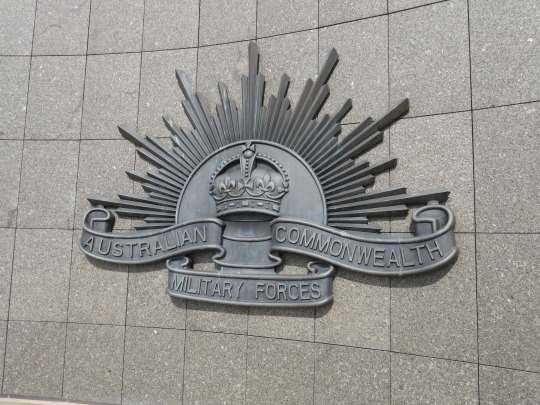
Well, that was a digression and a half. Tomorrow we leave Amiens, heading down into the Somme for the last big day of battlefield touring, and then onwards to the City of Lights itself.
Oh, one last story before I forget - our professor dug this up while looking through Monash’s correspondence for a history of Melbourne’s Shrine of Remembrance. Towards the end of Monash’s life, he began to think of what he ought to leave for Australia. As a war hero, he thought, he needed to leave them an example to look up to. As he was making arrangements for his legacy, he noted particular papers that he needed dealt with properly, as a matter of national importance.
So, shortly after he died, someone gathered these papers - I think his executor. As John Monash was buried in his modest grave, marked only with his name and eschewing his many honours, this person took them somewhere safe - perhaps an incinerator, or a bonfire in the bush. I can imagine this person, a tear in his eyes, a bugler playing the last post, as he was forced to consign a major piece of Australian history to the flame.
But duty called, and this man would obey. And therefore, with a heavy heart, he destroyed General Sir John Monash’s enormous collection of pornography.
4 notes
·
View notes
Text
Important reconnaissance flights during the advance
11 September 1914
I flew reconnaissance every day and kept the ADK always informed. I flew constantly and was amazed at the relatively good attitude of the retreating French columns. But no sooner had they crossed the Marne than there was no stopping them: without any discipline they threw away their rifles and knapsacks and fled inland ... I went down to 100 metres, wrote down and sketched what I saw. The order was "Reckless pursuit!". The 3rd Army Corps, Brandenburger and the Guard, proceeded brilliantly. Most of their officers had already fallen: the first before the enemy, the first to their deaths! ... The days of the Battle of the Marne will remain unforgettable for all aviators. The enemy had replenished his defeated troops with fresh forces and now let the German pursuers run against them. The enemy succeeded in inserting several corps between the 1st and 2nd German armies. I saw the unloading of strong enemy divisions at Provoins, their formation into columns and their departure to the north. So strong masses of troops marched in the direction of La Ferte, against the unfortunate gap between Kluck and Bülow! My heart was pounding, I had not suspected anything like that. My hands were trembling with excitement, so that I could hardly make the necessary entries. I made the report. Shaking heads, consulting. The ground was burning under my feet. Then: "Perhaps you have mistaken retreating French troops for advancing ones?" I was seething with anger. Another plane was sent out at my insistence, completely confirming my observations. I myself have no peace and fly again: my second report gives an even clearer picture: More and more French are pushing into the gap between the 1st and 2nd Armies. We are missing the two corps we had to give up against Maubeuge and Antwerp; they could have closed the gap ... My third message: "The enemy has already passed through, is already in our rear! ... One of our planes has just returned from an unsuccessful flight and is being pursued by two Frenchmen; they are the first enemy planes I have seen ... I shouldn't fly again, because our aircraft is no longer in perfect condition either. But I have no peace, I must go: this message must bring the decision! First we flew north, to the Kluck army, because the gap, not the front, was the main issue. After three hours we came back. I was eagerly awaited. I could hardly get through to General v. Bülow! I was alone with the boss when I had to report: "The enemy is advancing with strong columns between the 1st and 2nd armies! He is going north and has already crossed the Marne!" I have never seen a person wrestle with himself as hard as Exz. v. Bülow. He didn't even dare to think about it, let alone say it: Retreat. And yet, an hour after I sent my report, the orders to retreat went out on all sides ... This message saved two armies from certain destruction!
13 September 1914
An hour ago I received the Iron Cross 2nd Class. Apart from Exz. v. Bülow, I am the first person in our army to wear this simple, serious symbol. It had just arrived from the Headquarters. I still can't grasp that it's real, and yet it's in front of me on a black and white ribbon. I kissed the cross ... and yet: I did nothing more than my duty. No one from my department begrudged me it, everyone is happy and proud with me.
2 notes
·
View notes
Text
The website Carved in Stone has some documents related to Gedge's life, including his military service. He volunteered for service on October 7, 1914, at the age of 45. The British Army was all-volunteer and would remain so for another two years. He was one of many men signed up after the first battle of the Marne and subsequent battles made it clear that the war would be a long one. Men volunteered in groups, the so-called "Pals" battalions. He was apparently in one of the Sportsmen's battalions, which had many men about his age.
He fell on the first day of the battle of Loos, a fate shared by many of the recruits from late 1914. John Kipling, only son of the poet, was killed two days later.
currently maybe possibly single-handedly crashing whatever servers eton hosts its archived student newspapers on because me and a friend are getting obsessed with a single outspoken prefect from 1883
34K notes
·
View notes
Text

Mauser Model 1898AZ Cavalry Carbine from the German Empire dated to 1914 on display at the Black Watch Castle and Museum in Perth, Scotland
German cavalry units were equipped with shorter versions of the infantry rifles, carbines, that could be used and stored easily while on horseback. This carbine was captured by Captain Frotune of the 1st Battalion of The Black Watch in early September 1914. This was during the First Battle of the Marne where German cavalry was used to try and outflank the French and British positions in the early days of the war. This was before the reliance on trench warfare and the fighting was less static on the Western Front.
Photographs taken by myself 2024
#military history#german#germany#german empire#20th century#cavalry#first world war#black watch castle and museum#perth#barbucomedie
0 notes
Photo

Stunning Diamonte Silver Plated Indian OMPoppy Hindu British India Brooch Pin Stunning Diamonte Silver Plated Hindu Poppy Brooch Cake Pin
The Forgotten Heroes
Hindus are commonly distinguished as weak so therefore poor soldiers, yet they had been involved in fighting wars for others more than themselves. Among the first foreign forces were Hindus to fight for British on the Western front. In the war, India had hugely supported the British in most areas, these including: Politically, economically and also in military. At a time when majority of Indians were suffering from poverty and malnourishment, they gifted 100 million pounds for them to participate and strengthen the British in war. The support was in exchange also for the British’s understanding in giving India independence, which the British were in no hurry to fulfil. In total, approximately 1,338, 620 Hindus participated in the war. This number easily totals the number of army force from Australia, Canada, New Zealand and South Africa by 178,000. Hindu soldiers were involved in lands as diverse as, Palestine, France, Syria and Mesopotamia. Some historians say that it was the Hindu army which changed the course of the war by turning German soldiers at Marne. Hundreds of Thousands of Hindu soldiers lost their lives and no hero’s welcome awaited the survivors.
In the first World War, the Indian corps won 13,000 medals and 12 Victoria crosses and this is something that deserves broad recognition around the globe.
It was Indian jawans (junior soldiers) who stopped the German advance at Ypres in the autumn of 1914, soon after the war broke out, while the British were still recruiting and training their own forces. Hundreds were killed in a gallant but futile engagement at Neuve Chappelle. More than 1,000 of them died at Gallipoli, thanks to Churchill's folly. Nearly 700,000 Indian sepoys (infantry privates) fought in Mesopotamia against the Ottoman Empire, Germany's ally, many of them Indian Muslims taking up arms against their co-religionists in defence of the British Empire.
The most painful experiences were those of soldiers fighting in the trenches of Europe. Letters sent by Indian soldiers in France and Belgium to their family members in their villages back home speak an evocative language of cultural dislocation and tragedy. "The shells are pouring like rain in the monsoon," declared one. "The corpses cover the country, like sheaves of harvested corn," wrote another.
These men were undoubtedly heroes - pitchforked into battle in unfamiliar lands, in harsh and cold climatic conditions they were neither used to nor prepared for, fighting an enemy of whom they had no knowledge, risking their lives every day for little more than pride. Yet they were destined to remain largely unknown once the war was over: neglected by the British, for whom they fought, and ignored by their own country, from which they came.
We made this Poppy OM Brooch to commemorate the sacrifice of all Hindu Soldiers who participated and sacrificed their lives in both World War I and II.
#onlinesikhstore #onlinesikhstoreLtd #sikh #sikhsinuk #sikhsinkent #gurbani #gurbaniquotes #sikhquotes #SikhStore #SMARTFashionsUK #SikhArtefacts #sikhsoldiers #remembranceday #Sikhi #Sikhsirisahib #remembrance #onlinesikhshop #poppy #khalsa #singh #sikhs #sikhkara #khanda #singhs #sikhism #lestweforget #GuruNanak #khandapoppy Diamonte and Crystals Silver Plated Khanda Brooch Cake Pin for Jackets Shawls, Dupattas, Coats, Suits, Decorations, Wrappings, Sarees, Dcecoration of Wedding/Birthday/Anniversary Cakes and many other uses as described in the listing below. Brand new and in sealed Packs Properties: Diamonte Crystals, 3 dimension Color: Silver Plated Description: Stunning, glitter, elegant, beautiful. It is the perfect accessory for party, gift, weddings, proms, pageants, causal wear or other special occasions. Dimension: Approx. 3.5 cm x 2.7 cm x 1 cm *****RRP of these brooches is £31.99 each. Please note light sky blue shade in most of the brooches is due to a camera flash effect/light conditions. Email us at A or text/call 07883024604 for further information. Please do let us know about any special requests about wrapping these brooches while ordering.
0 notes
Text
But most of all he talked to them about the war that was still recent, which he had fought for four years, and about the suffering of the soldiers, their courage and their endurance, and the joy of the armistice. At the end of each term, before sending them home for vacation, and from time to time when the schedule allowed him to, he would read them long excerpts from Dorgelès's Les Croix de Bois. For Jacques these readings again opened the door to the exotic, but this time an exotic world stalked by fear and misfortune, although he never made any but a theoretical connection with the father he never knew. He just listened with all his heart to a story that his teacher read with all his heart and that spoke to him again of snow and his cherished winter, but also of a special kind of men, dressed in heavy cloth stiff with mud, who spoke a strange language and lived in holes under a ceiling of shells and fares and bullets. Pierre and he awaited each reading with ever-increasing impatience. That war everyone was still talking about (and Jacques listened silent but with ears wide open when Daniel would tell in his own way about the Battle of the Marne, where he fought and he still did not know how he had come out alive when they, the Zouaves, he said, they were put out in front and then at the charge down a ravine they charged and there was no one ahead of them and they were advancing and all of a sudden the machine gunners when they were halfway down they were dropping one on top of the other and the bed of the ravine was all full of blood and the ones crying for maman it was awful) that the survivors could not forget and that cast its shadow over everything in the children's world and shaped all the ideas they had for fascinating stories more extraordinary than the fairy tales read in other classes, and that would have disappointed and bored them if M. Bernard had taken it into his head to change his curriculum. But he went on with it, funny scenes alternating with terrifying descriptions, and little by little the African children made the acquaintance . . . of x y z, who became part of their world; they talked about them among themselves as if they were old friends who were right there and so much alive that Jacques at least could not for a moment imagine that though they were living in the war, there was any chance they could be victims of it. And on the day at the end of the year when, as they arrived at the end of the book, M. Bernard read them the death of D. in a subdued voice, when he closed the book in silence, facing his own memories and emotions, then raised his eyes to his silent, overwhelmed class, he saw Jacques in the first row staring at him with his face bathed in tears and shaking with sobs that seemed as if they would never end. "Come come, child," M. Bernard said in a barely audible voice, and he stood up to return the book to the case, his back to the class.
Albert Camus ֍ The First Man (1960)
0 notes